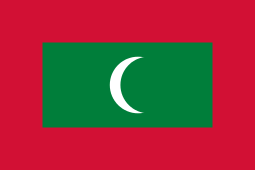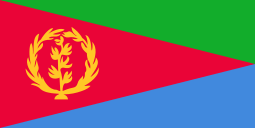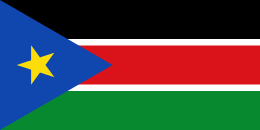Republics in the Commonwealth of Nations

A republic in the Commonwealth of Nations is any one of the 32 sovereign states of the Commonwealth of Nations with a republican form of government. Though, with the exception of the former Portuguese possession of Mozambique and the former Belgian trust territory of Rwanda, they are all former British possessions; in contrast to the 16 Commonwealth realms, they do not have Elizabeth II or another monarch as their Head of state. Elizabeth II is still the titular Head of the Commonwealth in a personal capacity, but this role does not carry with it any power, but acts as a symbol of the free association of Commonwealth members.[1]
Twenty-nine of the republics are former British (or partly British) self-governing colonies, that have evolved into republics by various means. In most cases, the countries achieved independence as Commonwealth realms, and later became republics within the Commonwealth. In some instances, the countries became republics after achieving independence from other former British colonies (as Bangladesh did from Pakistan in 1971).
History
Republics have been allowed as members of the Commonwealth since 1949, following the London Declaration made on 28 April of that year. 10 days before the declaration was made, the Republic of Ireland had been declared, ensuring Ireland's self-exclusion from the Commonwealth as republics were not allowed in the Commonwealth at that time. Ireland did not re-apply for membership of the Commonwealth, despite being eligible to do so under the London Declaration.
The declaration was made by India to allow it to continue its membership of the Commonwealth despite its decision to soon become a republic, which was to happen on January 26, 1950, when India would adopt its Constitution and become a republic, abolishing the monarchy. Thus, India became the first republic within the Commonwealth. This set a precedent that all other countries were free to follow, as long as they each recognised the position of Head of the Commonwealth. A compromise between the Indian government and those, such as Jan Smuts,[2] that wished not to allow republics membership, the Declaration read:
The Government of India have ... declared and affirmed India's desire to continue her full membership of the Commonwealth of Nations and her acceptance of the King as the symbol of the free association of its independent member nations and as such the Head of the Commonwealth.[1]
Following their independence from the United Kingdom, most Commonwealth countries retained Elizabeth II as head of state, the Monarch adopting a title to indicate sovereignty of their own respective nations (such as "Queen of Barbados", rather than "Queen of the United Kingdom"). With time, many Commonwealth realms moved to become republics, passing constitutional amendments or holding referendums to remove the monarch as their head of state, and replacing the Governor-General with an elected or appointed president. This was especially true in post-colonial Africa. Most African realms became republics within a few years of independence, and usually followed the Presidential system. Some states became Parliamentary republics, such as Malta or Fiji.
In Fiji, the change to a republic in 1987 came as a result of a military coup, rather than out of any republican sentiment. Even when Fiji was not a member of the Commonwealth, symbols of the monarchy remained, including the Queen's portrait on banknotes and coins, and, unlike in the United Kingdom, the Queen's Official Birthday is a public holiday. When Fiji was readmitted to the Commonwealth, the issue of reinstating the Queen as Head of State was raised, but not pursued, although the country's Great Council of Chiefs reaffirmed that the Queen was still the country's 'Paramount Chief'.
Some republics within the Commonwealth became republics on gaining independence from the United Kingdom; again, this was particularly true in Africa.
While the move to both independence and republican status has broken the remaining constitutional links to the United Kingdom, a number of Commonwealth countries have retained a right of appeal directly to the Judicial Committee of the Privy Council; for example, Dominica, Mauritius, and (if the case involves constitutional rights) Kiribati. In contrast with Commonwealth realms and British overseas territories, however, such appeals are made directly to the Judicial Committee, rather than formally being made to "Her Majesty in Council".
Commonwealth membership
Within the Commonwealth, there is no differentiation in status between republics, Commonwealth realms or the members with their own monarchs (Brunei, Lesotho, Malaysia, Swaziland, and Tonga).
Membership of the Commonwealth is by common assent of the existing members, and this principle applies equally to territories gaining independence or to outside territories requesting membership. Until 2007, Commonwealth members that changed their internal constitutional structure to that of a republic had to re-apply for membership also.[3] Widespread objection to the racial policies in South Africa resulted in that country deciding not to pursue a re-application for Commonwealth membership when it became a republic in 1961. South Africa was subsequently readmitted as a member of the Commonwealth after democratic elections in 1994. Fiji and the Maldives also did not apply for continued membership after becoming republics (Fiji was likely to be suspended in any case, since a coup had overthrown the democratically elected government), and thus their membership lapsed too.
Current republics in the Commonwealth
In some former Commonwealth realms, including Malta, Trinidad and Tobago, and Mauritius, the new office of President was a ceremonial post, usually held by the last Governor-General, each respective country being a Parliamentary republic. In others, such as Ghana, Malawi and Gambia, the Presidency was an executive post, usually first held by the last Prime Minister, with each respective country being a Presidential republic. In the latter cases, not only was the monarchy abolished, but so was the entire Westminster system of parliamentary government as well.
List of Commonwealth republics
Former Commonwealth realms
Republics on independence
| Member state | Year of independence | Republic created through | Type of president | First president | |
|---|---|---|---|---|---|
| 1 | 19601 | New constitution | Executive | New appointment | |
| 2 | 19612 | New constitution | Executive | New appointment | |
| 3 | 19623 | New constitution | Ceremonial | New appointment | |
| 4 | 19624 | New constitution | Executive | New appointment | |
| 5 | 1964 | New constitution | Executive | Incumbent Prime Minister | |
| 6 | 19655 | New constitution | Ceremonial | Incumbent Governor (as a state of Malaysia) | |
| 7 | 1966 | New constitution | Executive | Incumbent Prime Minister | |
| 8 | 19686 | New constitution | Executive | New appointment | |
| 9 | 19717 | New constitution | Ceremonial | New appointment | |
| 10 | 19758 | New constitution | Executive | New appointment | |
| 11 | 1976 | New constitution | Executive | New appointment | |
| 12 | 1978 | New constitution | Ceremonial | Incumbent Governor (interim) | |
| 13 | 1979 | New constitution | Executive | Incumbent Chief Minister | |
| 14 | 1980 | New constitution | Ceremonial | New appointment | |
| 15 | 19909 | New constitution | Executive | New appointment |
1. Cyprus became a member of the Commonwealth in 1961.
2. Cameroon became a member of the Commonwealth in 1995.
3. Samoa became a member of the Commonwealth in 1970, but its heads of state were originally two traditional chiefs, but was de jure a republic; after the death of the last traditional chief, the new head of state was chosen for a five-year term by Samoa's parliament.
4. Rwanda's independence as a republic was attained from Belgium in 1962. It became a member of the Commonwealth in 2009.
5. Singapore was formerly part of Malaysia.
6. Nauru became an independent republic in 1968, but did not become a full member of the Commonwealth until 2000.
7. Bangladesh was formerly East Pakistan (1955–1971), previously a part of India as East Bengal, upon independence it became part of Pakistan as part of the Partition Plan in 1947.
8. Mozambique's independence as a republic was attained from Portugal in 1975. It became a member of the Commonwealth in 1995.
9. Namibia was formerly a League of Nations Mandated Territory administered by South Africa and continued to be de facto administrated by South Africa until independence.
Other republics in the Commonwealth
| Member state | Year of independence |
Became a Commonwealth republic |
Government type | First president | |
|---|---|---|---|---|---|
| 1 | 19701 | 1987 | Parliamentary republic | Incumbent Governor-General | |
| 2 | 19571 | 1960 | Presidential republic | Incumbent Prime Minister | |
| 3 | 19661 | 1970 | Parliamentary republic | Incumbent Governor-General (interim) | |
| 4 | 19471 | 1950 | Parliamentary republic | New appointment | |
| 5 | 19631 | 1964 | Presidential republic | Incumbent Prime Minister | |
| 6 | 19641 | 1966 | Presidential republic | Incumbent Prime Minister | |
| 7 | 19641 | 1974 | Parliamentary republic | Incumbent Governor-General | |
| 8 | 19681 | 1992 | Parliamentary republic | Incumbent Governor-General | |
| 9 | 19601 | 1963 | Parliamentary republic | Incumbent Governor-General | |
| 10 | 19471 | 1956 | Parliamentary republic | Incumbent Governor-General | |
| 11 | 19611 | 1971 | Presidential republic | Incumbent Governor-General | |
| 12 | 19311 | 1961 | Parliamentary republic | Incumbent Governor-General | |
| 13 | 19481 | 1972 | Parliamentary republic | Incumbent Governor-General | |
| 14 | n/a2 | n/a2 | Presidential republic | New appointment | |
| 15 | 19621 | 1976 | Parliamentary republic | Incumbent Governor-General | |
| 16 | 19621 | 1963 | Parliamentary republic | New appointment |
1. Gained independence as a Commonwealth realm before becoming a republic at a later date.
2. The United Republic of Tanzania was formed in 1964 from the merger of Tanganyika, which had gained independence as a Commonwealth realm in 1961 before becoming a republic in 1962, and Zanzibar, which had gained independence in 1963 and remained a Sultanate until 1964.
Republics formerly in the Commonwealth
Currently, the only former Commonwealth republics are:
 Ireland is a republic and a former member of the Commonwealth; however, it does not fit neatly into a category as such. In 1922, as the Irish Free State it became a Dominion in the British Commonwealth. In 1937, the present-day Irish state, Ireland was established. Its constitution established it as a de facto republic with little reference to a monarchy but equally no reference to a republic either. The Commonwealth chose at the time to continue to regard it as a member. In 1949, Ireland proclaimed that it was a republic but no new Irish state was established. It was deemed by the Commonwealth to have ceased to be part of the Commonwealth. The same state established in 1937 continued in being. Hence Ireland did become a republic since independence and was a member of the Commonwealth but was never a Commonwealth republic.
Ireland is a republic and a former member of the Commonwealth; however, it does not fit neatly into a category as such. In 1922, as the Irish Free State it became a Dominion in the British Commonwealth. In 1937, the present-day Irish state, Ireland was established. Its constitution established it as a de facto republic with little reference to a monarchy but equally no reference to a republic either. The Commonwealth chose at the time to continue to regard it as a member. In 1949, Ireland proclaimed that it was a republic but no new Irish state was established. It was deemed by the Commonwealth to have ceased to be part of the Commonwealth. The same state established in 1937 continued in being. Hence Ireland did become a republic since independence and was a member of the Commonwealth but was never a Commonwealth republic. Zimbabwe, republic since 1980, left the Commonwealth in 2003.
Zimbabwe, republic since 1980, left the Commonwealth in 2003. Gambia was a Commonwealth realm from 1965 until 1970, when it became a republic within the Commonwealth. Yahya Jammeh, the Gambian president, withdrew the country from the Commonwealth in October 2013. However, newly-elected president Adama Barrow has pledged to bring The Gambia back into the Commonwealth.[4]
Gambia was a Commonwealth realm from 1965 until 1970, when it became a republic within the Commonwealth. Yahya Jammeh, the Gambian president, withdrew the country from the Commonwealth in October 2013. However, newly-elected president Adama Barrow has pledged to bring The Gambia back into the Commonwealth.[4] Maldives became a republic in 1965, prior to which it was an independent sultanate; became a republic within the Commonwealth on 9 July 1982. Maldives withdrew from the Commonwealth on 13 October 2016.[5]
Maldives became a republic in 1965, prior to which it was an independent sultanate; became a republic within the Commonwealth on 9 July 1982. Maldives withdrew from the Commonwealth on 13 October 2016.[5]
Potential republican candidates for the Commonwealth
 Egypt: British protectorate from 1882 until 1922 but British troops still defended Egypt in the Second World War and helped train and controlled the Egyptian Army. British troops controlled the Suez Canal until 1956. The Egyptian Monarchy was abolished in 1953.
Egypt: British protectorate from 1882 until 1922 but British troops still defended Egypt in the Second World War and helped train and controlled the Egyptian Army. British troops controlled the Suez Canal until 1956. The Egyptian Monarchy was abolished in 1953. Eritrea: Administered by Britain under a UN Mandate until 1951.
Eritrea: Administered by Britain under a UN Mandate until 1951. Iraq: British Mandate of Mesopotamia until 1932. The Iraqi Monarchy was abolished in 1958.
Iraq: British Mandate of Mesopotamia until 1932. The Iraqi Monarchy was abolished in 1958. Israel part of the British Mandate of Palestine until 1948.
Israel part of the British Mandate of Palestine until 1948. Libya: In 1943 the British administered the provinces of Tripolitania and Cyrenaica until 1951. The Libyan Monarchy was abolished in 1969.
Libya: In 1943 the British administered the provinces of Tripolitania and Cyrenaica until 1951. The Libyan Monarchy was abolished in 1969. Myanmar: Gained independence as a republic in 1948.
Myanmar: Gained independence as a republic in 1948. South Sudan: Part of Sudan until 2011, when it became a republic in its own right.
South Sudan: Part of Sudan until 2011, when it became a republic in its own right. Sudan: Gained independence as a republic in 1956.
Sudan: Gained independence as a republic in 1956. Suriname: English colony of Willoughbyland from 1650 to 1667 and again controlled by the British from 1799 to 1816. Gained independence from the Netherlands as a republic in 1975.
Suriname: English colony of Willoughbyland from 1650 to 1667 and again controlled by the British from 1799 to 1816. Gained independence from the Netherlands as a republic in 1975. United States: Former British colony until independence in 1776. Like all other former colonies, the United States is a viable candidate as a republic under the commonwealth.
United States: Former British colony until independence in 1776. Like all other former colonies, the United States is a viable candidate as a republic under the commonwealth. Yemen: South Yemen was a British colony (Aden) and British protectorates (Protectorate of South Arabia and the states, apart from Aden, in the Federation of South Arabia) until 1967.
Yemen: South Yemen was a British colony (Aden) and British protectorates (Protectorate of South Arabia and the states, apart from Aden, in the Federation of South Arabia) until 1967.
See also
Footnotes
- 1 2 de Smith, S.A. (July 1949). "The London Declaration of the Commonwealth Prime Ministers, April 28, 1949". The Modern Law Review. 12 (3): 351–4. doi:10.1111/j.1468-2230.1949.tb00131.x. JSTOR 1090506.
- ↑ "1949–1999: Fifty Years of a Renewing Commonwealth". The Round Table. 88 (350): 1–27. April 1999. doi:10.1080/003585399108072.
- ↑ "Membership of the Commonwealth: Report of the Committee on Commonwealth Membership". Commonwealth Secretariat. 2007. Retrieved 2008-09-02.
- ↑ "Gambia's Jammeh loses to Adama Barrow in shock election result". BBC News. 2 December 2016. Retrieved 3 December 2016.
- ↑ http://thecommonwealth.org/media/news/secretary-general-statement-maldives-decision-leave-commonwealth